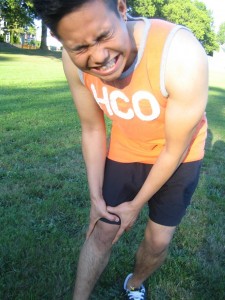A dislocation is basically an injury in which the ends of bones are forced from their normal positions. This is typically caused by trauma from a fall, vehicular accident or a collision during contact sports. For adults, the common site of dislocation is the shoulders while the elbows for children. Dislocation usually involves the large joints in the body. The thumb is also prone to dislocation if it is forcefully bent the wrong way.
The injury can temporarily deform and immobilize the joint and can result to abrupt and severe pain with swelling. Understandably, a dislocation would require immediate medical attention so that the bones can be restored to their proper positions.

Causes of dislocations
Dislocations usually occur once a joint experiences an unbalanced or unexpected impact. This can happen if you fall or suffered from a strong blow in the affected area. The moment the joint has been dislocated, it is at risk for dislocations in the future.
Who are at risk for dislocations?
Any individual can end up with a dislocated joint if he/she has a fall or suffered from any kind of trauma. Nevertheless, elderly individuals are at higher risk particularly those that lack mobility or those who are not able to prevent falls. Children are at greater risk for dislocations if they are left unsupervised or play in an area that is not child-proofed. Individuals who practice unsafe behavior during physical activities are at high risk for dislocations as well. In case a person has a dislocated joint in the past, the affected area is prone to injury in the future.
How to recognize a dislocation
In most scenarios, you can easily determine if a dislocation has occurred. Understandably, the affected area might be swollen or appear bruised. You will also notice that the area is reddish or discolored. The affected area might also have an unusual shape due to the dislocation.
Some of the symptoms linked with dislocated joints include:
- Pain during movement
- Loss of motion
- Tingling sensation
- Numbness around the area
Steps to take if a dislocated joint is suspected
- Always seek immediate medical assistance
- Avoid moving the joint. While waiting for medical help, you have to splint the affected joint into its fixed position. Do not move the dislocated joint or force it back into place. In doing so, it will only damage the joint and its surrounding ligaments, muscles, blood vessels and nerves.
- Apply ice on the affected joint. This will help minimize swelling by controlling the internal bleeding and the build-up of fluids in and around the affected joint.
In case of accidents, it is best to seek immediate emergency assistance so that early interventions can be provided. With the help of first aid courses, it can greatly help in case an individual ends up with a dislocated joint.